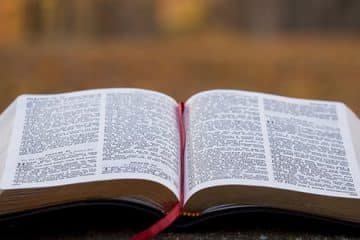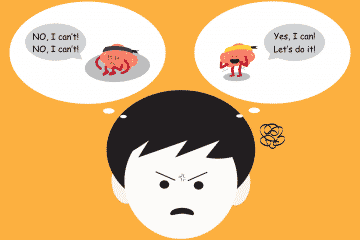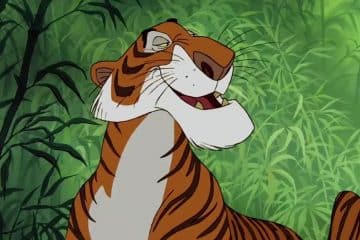Article menu:
- From the history of text writing
- Briefly about the plot of the work
- About the central characters of the fable
- The image of a lamb
- The image of a wolf
- The main thing: about the morals of the work
- Artistic features of Krylov’s creations
- Personification as a fable writer’s weapon
- Krylov is a master of words
- Inversions and anaphora in the text
- A peculiarity of the author’s manner of the writer
- The mood of the work
- What does the author condemn?
- Krylov’s work as a miniature play
- Symbols of the Krylov fable
- Conclusions from the work
So, in this article, we are interested in the text called “The Wolf and the Lamb”. A sophisticated reader will, of course, immediately understand when he sees the name – this is the creation of Krylov’s hands.
The beginning of the 19th century, in 1808, was marked by the publication of this work in the “Dramatic News” publication. However, literary scholars have not come to a consensus about the time of the creation of this fable. The author acted in an original way, placing the traditional fable moral at the beginning of the text. Krylov writes that a strong hero always blames a powerless, weak hero for his troubles. The writer believes that this life rule has been repeated a lot:
The strong always have the powerless to blame:
That is why in history we hear the darkness of examples
But we don’t write history
And here is how they say in fables…
Well, perhaps, it is worth taking a closer look at the message of the Russian fable writer.
From the history of writing text
As you know, the Russian fabulist often borrowed stories from his foreign colleagues. For example, the famous classic of the fable genre – is La Fontaine. Therefore, the writer also recognizes this work as a “translation or imitation” of the great fabulists. In addition, we know that La Fontaine himself had a parable-fable with a similar name – Le loup et l’agneau, that is, literally, we are talking about “The Wolf and the Lamb.” But the French writer in his work also relies on the great teachers of antiquity. For example, La Fontaine openly refers to Aesop and Phaedrus.
Briefly about the plot of the work
The author presents readers with several images. The first hero is a lamb. This character is characterized by courage and determination. The lamb is not afraid of a predator, proving that he is right. However, even if the lamb is indeed right, then attempts to prove this right only anger another hero – the wolf.
About the central characters of the fable
This work by Krylov is called rare not only because of the exceptional structure and composition of the text. There is another feature – the equal importance of both characters in the work. The characters are so strongly attached to each other as if merged together. The writer demonstrates the complementarity of the protagonist with the antagonist.
Image of a lamb
So, the positive hero, the protagonist, and the lamb personify the average, the most ordinary person, and the poor. The lamb is desperately trying to prove his own case, but the wolf still says that he cannot avoid death. Krylov tells an instructive story about how strong people abuse their opportunities and power. A strong person can always oppress a weaker person. This world is arranged unfairly, as often force and power are presented as truth.
The lamb is the personification of the defenselessness, and lack of rights of the people, as well as each individual simpleton. The hero uses his only weapon, a kind word, hoping that kindness will soften the wolf.
However, initially, the lamb is doomed, as the poor fellow is powerless in front of a stronger opponent. The lamb communicates with the wolf as with a noble person, respectfully. The hero’s remarks are short, timid, and concise, but capacious and meaningful.
“When the brightest Wolf allows,
I dare to convey that down the stream
From the Lordship of his steps I drink a hundred;
And in vain he will deign to be angry:
I can’t stir up a drink for him in any way ”…
The image of a wolf
The antagonist, the negative hero, the wolf is represented by a rich and noble man. This character knows what power is, and knows how to use his powers, often abusing opportunities and privileges.
Despite the fact that the second hero is probably right, a strong character stubbornly declares: that attempts are futile – the victim will be eaten:
“Oh, what am I to blame? – “Shut up! I’m tired of listening.
Leisure time for me to sort out your guilt, puppy!
You are to blame for the fact that I want to eat “…
After these words, the predator dragged his prey into the thicket. Khemnitser, a famous poet, the meaning of Krylov’s text in general, as well as the image of a wolf in particular, was expressed as follows:
- the wolf is the embodiment of a strong, power-hungry, and evil person, greedy, ready to deal with even an innocent person out of selfish motives;
- a weak hero, a sheep, is, on the contrary, a meek, innocent creature who is not able to fend for himself;
- the wolf does not hesitate to use its power, the benefits of its position;
- the hero neglects the rules and laws, realizing his own impunity;
- in communication with the lamb, the wolf behaves rudely, cruelly and angry, often insults the weak hero (for example, the wolf uses words such as “dog” and “unclean snout” in relation to the lamb);
- the wolf is an impudent creature, shameless, not afraid to expose its whole essence to the outside;
- the only way out is simply not to interact with a stronger person, with a rich man, since the laws of society will still be on his side (even if he is wrong):
Shouts: “How dare you, insolent, with an unclean snout
Here is my pure muddy drink
With sand and silt?
For such audacity
I’ll rip your head off…
In his comments on Krylov’s works, Chemnitzer writes as follows:
Near the big house of the rich man stands the little house of the poor man, but now the rich man wanted to stretch his house on the land of the poor man, and let him find fault with him, all of a sudden he cocks various slanders on him and ends up pulling away the last property from the poor man. There is nothing to compete with such a person; only try to get away from him in advance, because he has the same reprisal as a wolf …
The main thing: about the morality of the work
Krylov’s creation is considered a rare fable that begins with morality because morality usually completes the work in this genre. From the very beginning of the story, the writer sets a certain mood for the readers. The recipient knows what the author will talk about next. Krylov in a beautiful, literary form gives readers a well-known truth: strength often automatically means being right. Indeed, how can a deliberately defenseless creature (a lamb) prove something to a strong, bloodthirsty wolf? But the author also hints to the wolf that one day there will be justice for him – someone stronger than the wolf. And now the predator becomes the prey.
Where is the main meaning, the message of the author hiding? If we formulate the essence in one sentence, it will turn out like this: weak people often become victims of the power of this world. The world is not fair. It is not the truth that wins, not the truth, but strength. Unrighteous deeds are hidden under the masks of law and righteousness. In the image of a wolf, typical villains appear, for whom lying, and slandering an innocent person is a sheer nonsense. As a result, as a rule, such people achieve their goals by creating problems for a less powerful person.
The teacher Tikhomirov considers the key meaning of the work to be the emphasis on the inevitable guilt of the weak over the strong. The rich man lives at the expense of the poor – these are the rules. However, even the powerful of this world are aware of their own guilt and wrong – albeit very deep in their souls. Therefore, they try to make their wicked deeds look like law. Tikhomirov’s colleague, Vodovozov focuses on the vileness of gross cruelty, violence, hypocrisy, and deceit, which the author skillfully reveals. Moreover, this theme is manifested not only in this work. You can also recall other similar creations of Krylov: “The Cat and the Nightingale”, “The Wolf and the Cuckoo”, “The Wolf and the Cat”, etc.
Artistic features of Krylov’s creation
Personification as a weapon of the fabulist
Krylov uses a classic technique for this genre – he introduces images of animals into the text. In this way, the author demonstrates to readers how strong people can be cruel and aggressive, and how weak people can be defenseless and clumsy in trying to protect themselves. Strong people justify aggression by appealing to the letter of the law, turning rules and morality inside out.
In the animal world, cruelty, the rule of survival, is the natural order of things, the norm. However, people live by different rules. In society, morality is at the center of people’s relations, and it is often not the strong that survive, but the weak, thanks to morality. Nevertheless, Krylov demonstrates the “right of the strong”, which grossly violates justice. It is natural that the writer condemns such an order that completely ignores common sense. Although the lamb personifies a person capable of providing clarity of arguments and proving his own innocence, this hero is defeated.
Krylov is a master of words
The richness of vocabulary and virtuosity of words, skill in mastering the means of artistic expression is a characteristic features of Krylov’s work. The writer uses contextual synonyms and paraphrases (for example, “brightest wolf”, and “lordship”). Especially this technique stands out in the appeal of the lamb to his strong master – the wolf. A weak hero does not address a strong character directly.
The fable “The Monkey and Glasses” fully reflects the skill of Ivan Krylov, who ridiculed high-ranking stupid and short-sighted officials, while using the image of an ignorant and stupid Monkey. We invite readers to familiarize themselves with the descriptions of this work.
In addition, at the same time, these phrases are vivid epithets. The writer also uses other epithets: “unclean snout”, and “dark forest” … And also in the work, there are a lot of various synonyms (“wish evil”, “harm”).
Inversions and anaphoras in the text
For such a genre as a fable, the use of inversions is also characteristic. Why is the author doing this? For example, this is how the writer shifts the emphasis to the last part of the phrase, thus emphasizing the importance of these last words. This technique can be seen in the following places of the work:
- “about how they speak in fables”;
- “to be angry in vain, he deigns”;
- “I have no brothers”;
- “I went to the stream to get drunk”;
- “a hungry wolf roamed”;
- “My pure muddy drink,” etc.
Krylov also uses a rare technique of anaphora – a single sound, lexical beginning (which merges with amplification – a popular rhetorical device): “… you yourself, your dogs and your shepherds, all of you …”.
The peculiarity of the author’s manner of the writer
It is impossible not to note the author’s style of fabulist – recognizable and unique. The form of the verse, the presence of hyperbole, vivid metaphors, and metonyms are all characteristic features of Krylov’s texts.
The antithesis is also important in the work, which succinctly expresses the key idea of the author. We are talking about the phrase that the strong always blame the powerless for all the troubles.
The mood of the work
The appeals that the author introduces into the text are usually colored very ironically. Such is, for example, the word “friend”. Also, the writer often uses colloquial words, and turns. This technique makes the speech bright, colorful, and most importantly, accessible to readers of any intellectual level. Perhaps, fables are characterized by versatility, suggesting different levels of perception of the text.
Krylov is a lover of folklore shades. There are a lot of colloquial words in the text: “it is necessary”, “prowl”, “heard”, “to convey”, “such”, etc. In order to better reveal the essence of the characters, and to present the characterization of the characters more clearly, the writer introduces dialogues into the work. Also, this form involves rhetorical questions and exclamations that allow readers to see all aspects of the described situation.
What is the author condemning?
Of course, the fable genre always implies a powerful moral message. The writer reveals the moral vices of society, condemning hypocritical, mercenary, cruel, vile, deceitful people who abuse their position and power. In general, the moral of the work is expressed in a non-standard way – at the very beginning of the text.
Due to the relevance and eternity of the issues that the author touches on, “The Wolf and the Lamb” was literally dismantled into quotes. Many phrases from Krylov’s masterpiece have become winged. It is curious that Krylov, starting his text, speaks of the historicity of the events of the work. The writer comes to a sad conclusion: a person, apparently, learns only from his own mistakes, and history does not teach people anything. But how can it be, because history is a storehouse of images of violence, cruelty, and legends, where weak states are absorbed by stronger, heavily armed powers! Using the form of a fable, citing bizarre plots, the writer tries to teach readers to pay attention to history.
Krylov’s work as a miniature play
This remarkable comparison was invented by the critic Sergeev. Commenting on the essence, morality, and meanings of Krylov’s works, the writer noted that the author’s work resembles a miniature play. It’s like a small one-act drama. The fables are distinguished by sharp, vivid characters, clearly defined figures of key characters, lively, witty dialogues, and dynamic actions. Events are developing quickly, and rapidly.
“The Wolf in the Kennel” is one of the fables of Ivan Krylov, which is endowed with historical meaning. We invite readers to familiarize themselves with the description of this work.
The author comments on his text as if inserting remarks – as they do with stage works. That is, Krylov as if for theatrical production, explains the plot and the actions of the characters. Anticipating the main text with a central thought, and conclusion, the author makes his creation memorable. In addition, since morality is placed before the text itself, this part of the work is a thesis illustrating the writer’s message.
Symbols of Krylov’s fable
Krylov makes his characters not just images, but symbols. For example, a wolf is a symbol of impunity, strength, and power. The lamb is the opposite. The wolf knows how to justify his own actions by allegedly wrong actions (misconduct) of a weak hero. Each new wolf’s response makes the lamb’s offense more and more severe. Thus, the wolf acts as a judge.
At first, the weak hero is accused of negligence, of careless behavior. The second accusation is rudeness. The next phase of the wolf is a demonstration of the intensity of passions, the apogee. The wolf managed to accuse the lamb and all the sheep in general of showing hatred for the wolf kind. Also, according to the wolf, shepherds and dogs hate predators.
And, in a word, someone from your own family.
You yourself, your dogs, and your shepherds,
You all want me bad
And if you can, then always harm me;
But I will reconcile their sins with you …
Well, the wolf is a great master demagogue who ascribes to himself the fate of the victim. Everything is turned inside out.
“That’s why I’m lying!
Waste! Have you heard such insolence in the world?
Yes, I remember that you are still in last summer
I was somehow rude here;
I haven’t forgotten that, buddy!
At the same time, all readers know why wolves are hated: for cruelty, aggression, and destructive behavior of predators. But the lamb is not even given a word, because the hero cannot defend himself against a stronger hero. So Krylov demonstrates the cruel truth of life.
Conclusions from the work
Krylov delicately addresses one of the most painful topics – the lack of rights of ordinary people. The writer gained a reputation as an ardent defender of the offended people, and therefore it was difficult to miss the opportunity to once again reveal this topic in a fable. Krylov easily puts all the nuances in their places. By tradition, the author ridicules in the text the vices of society in general and individuals in particular. These vices of society should, according to Krylov, be eradicated and corrected. However, the force that is out of control is uncontrollable, this element is almost impossible to stop. The powerful of this world do not need excuses for their atrocities. The writer hopes that one day force and power will work for the interests of the common people, and will help restore justice.
Well, Krylov only makes one admire his ability to express the vices of society with a concise and sharp words. So the author reminds stronger people again and again how vilely they treat weaker people.
The finale, where the wolf gives the last argument, is a kind of moment of truth. The hero, throwing off his mask, speaks the truth. The lamb is a symbol of the atoning sacrifice that suffers and endures for all the sheep as a whole. Sometimes literary scholars and critics see this moment of the fable as a reference to stories from the Bible.






Profound analysis of the motivation of the main characters, images, and their actions in combination with the study of the author’s creative style gives us a surprisingly detailed and at the same time concise view of the philosophy of humanity and morality in general. Thank you for such interesting and quality content!
An instructive and at the same time interesting story about good and evil, about morality and motivation. Why is the wolf the way it is depicted? Not because his character is prescribed by the author, but because it is in his nature. And at the very end of the story, we come to this and learn that all moral labels cover one terrible animal essence.